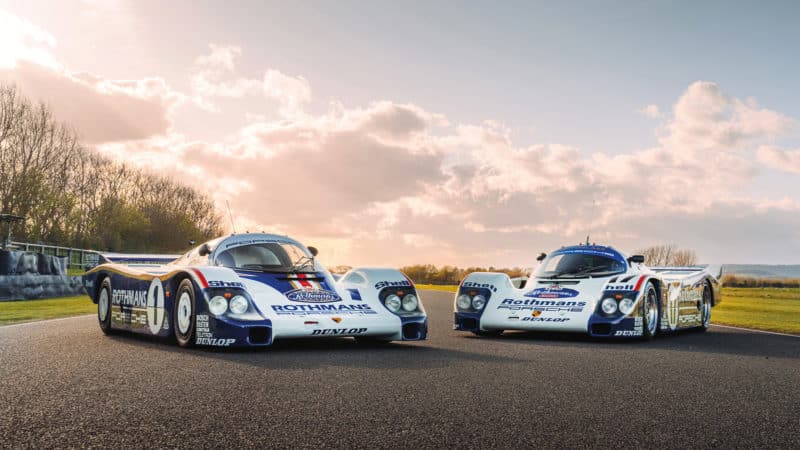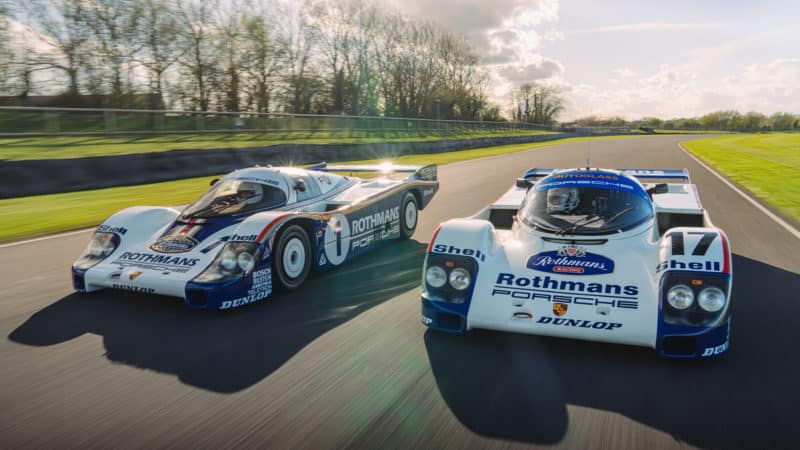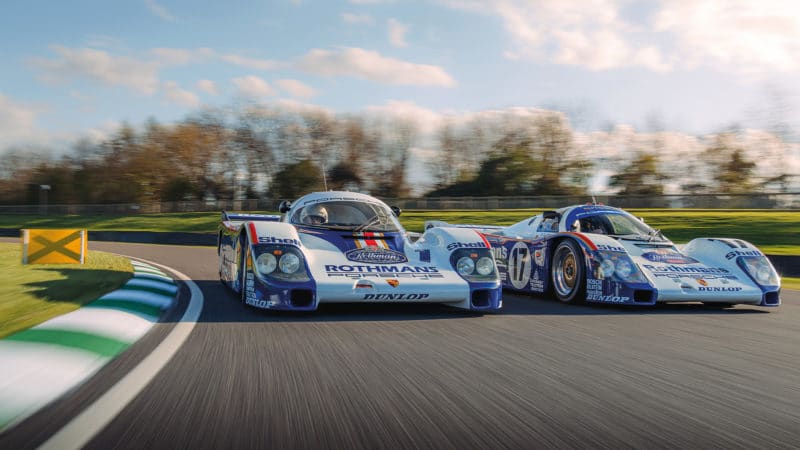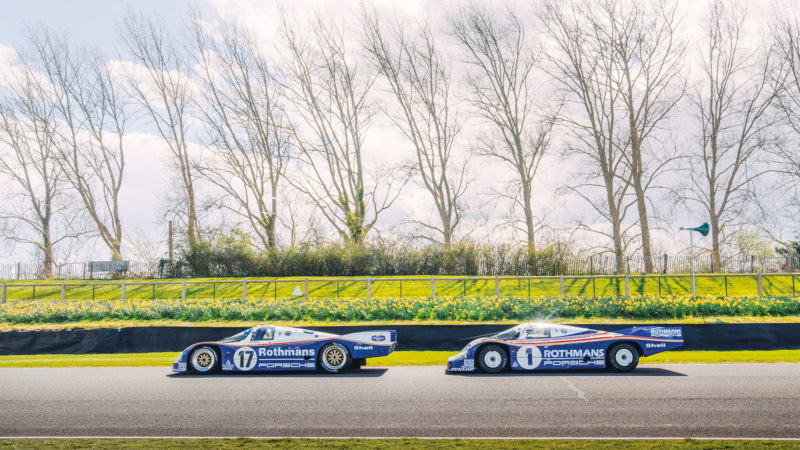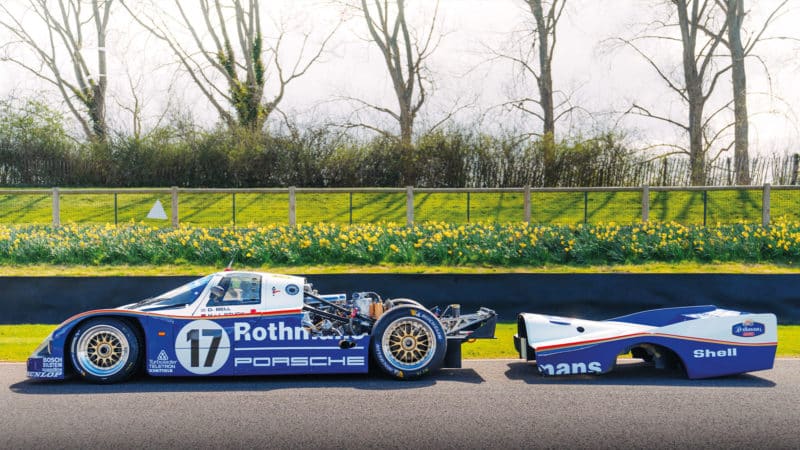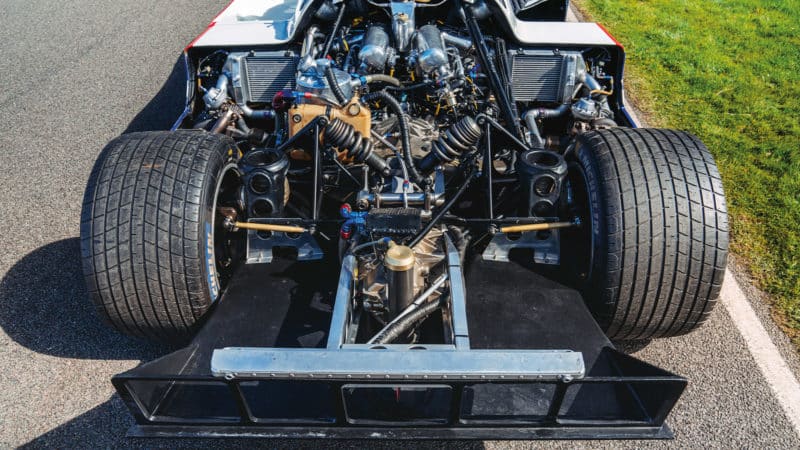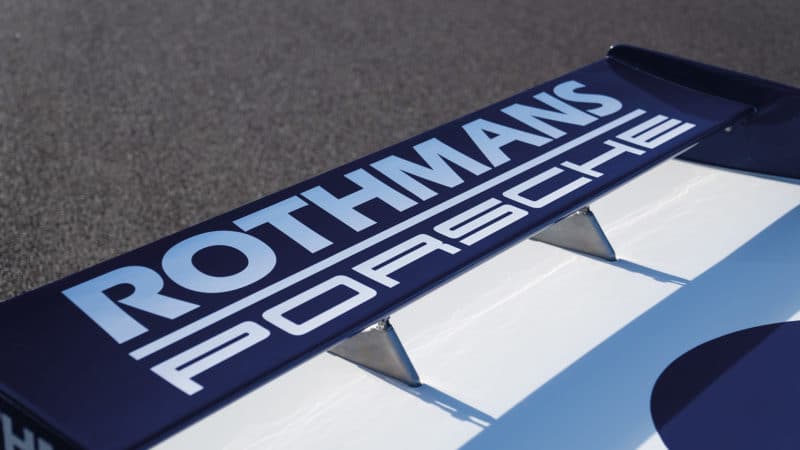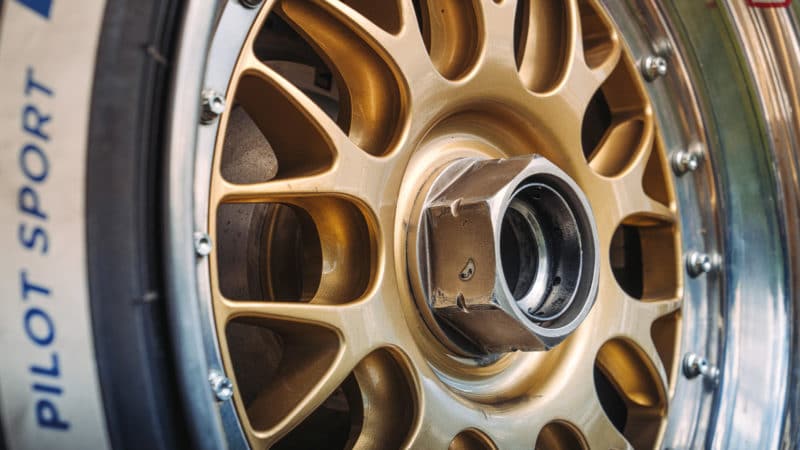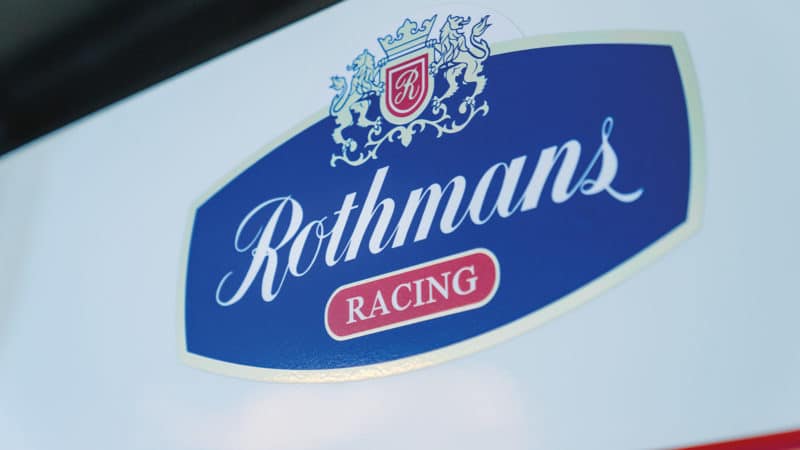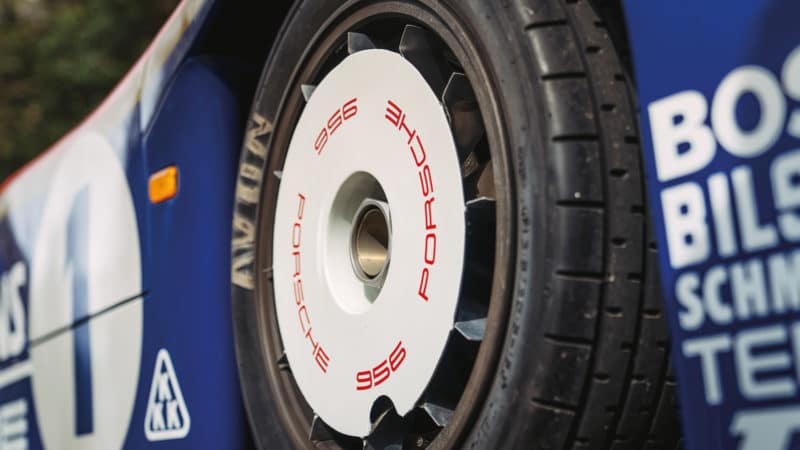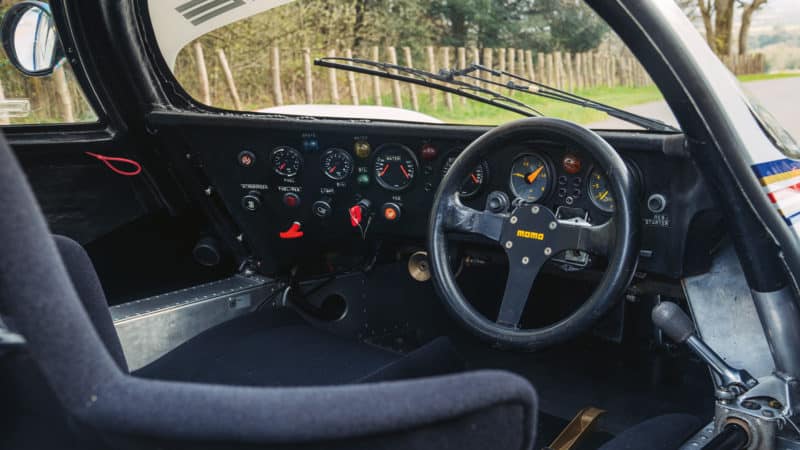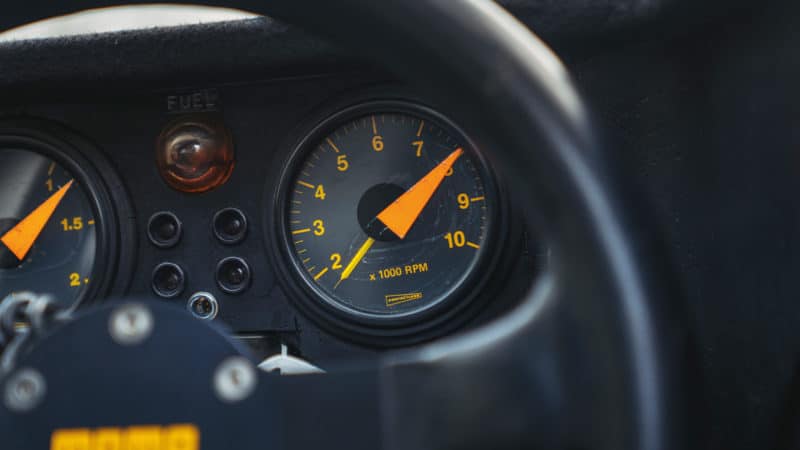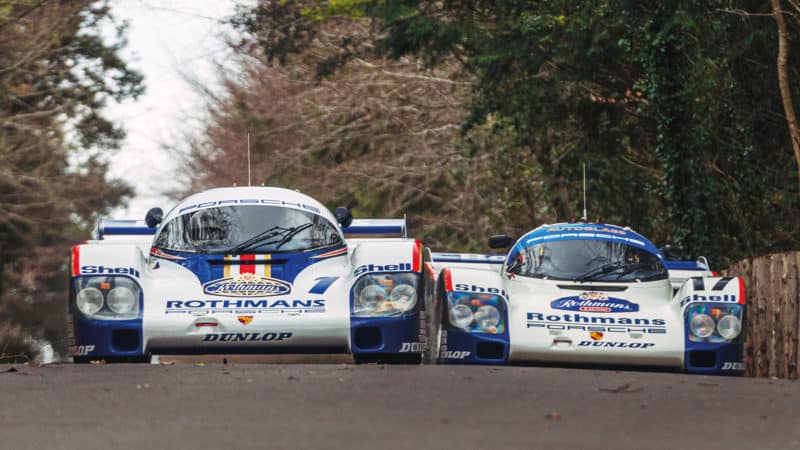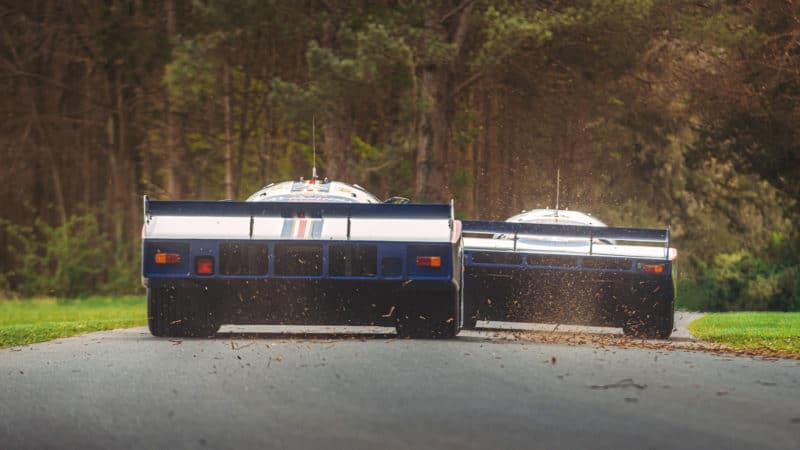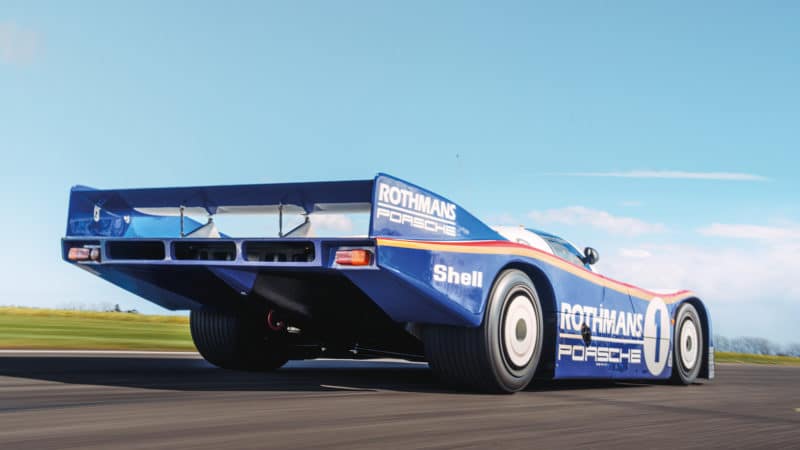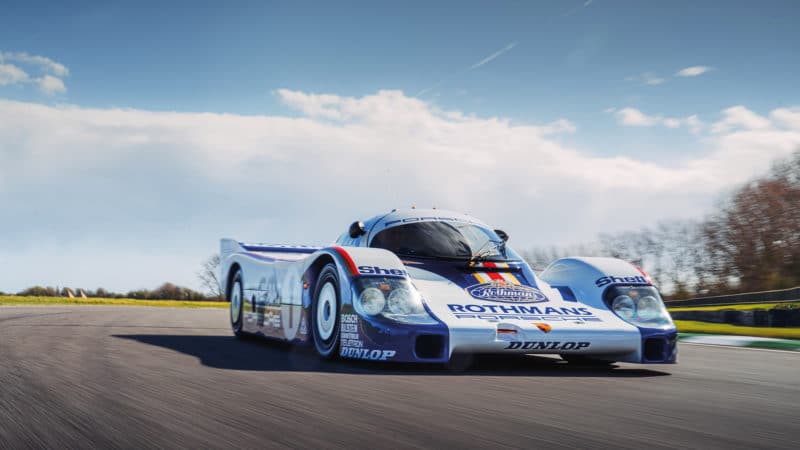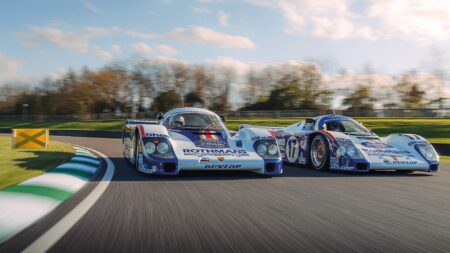Frankel is mindful of not putting either car into the Sussex circuit’s banking, but that doesn’t mean he isn’t still able to experience either car’s considerable aerodynamic capabilities.
“It’s obviously not a track where Group C cars ever competed, but with its long, flowing high speed corners it’s a natural fit for such a car,” he continues.
“Once you’ve got a feel for the way the controls want to work, the car is utterly reassuring from the outset. Unlike a Jaguar Group C car, which needs watching both while braking into and accelerating away from corners, the 956 seems instantly on your side. You feel everything through the steering which writhes gently around in your hands while it lets you pick your apexes with pinpoint accuracy.
“The overall gearing is high which means that first is actually a proper gear which might even have been used for maximum thrust away from Arnage or Mulsanne, while fifth will take you to 230mph and beyond.
“And what does that feel like? Well if I tell you its power-to-weight ratio even in this trim is more than twice that of Porsche’s current sports car flagship, the 911 Turbo S, you will appreciate that here is a car that will accelerate in a manner that even those experienced with some of the fastest supercars could even conceive.”
An incredible experience behind the wheel then, but one coming from a car which is no less breathtaking to look at than it is to drive.
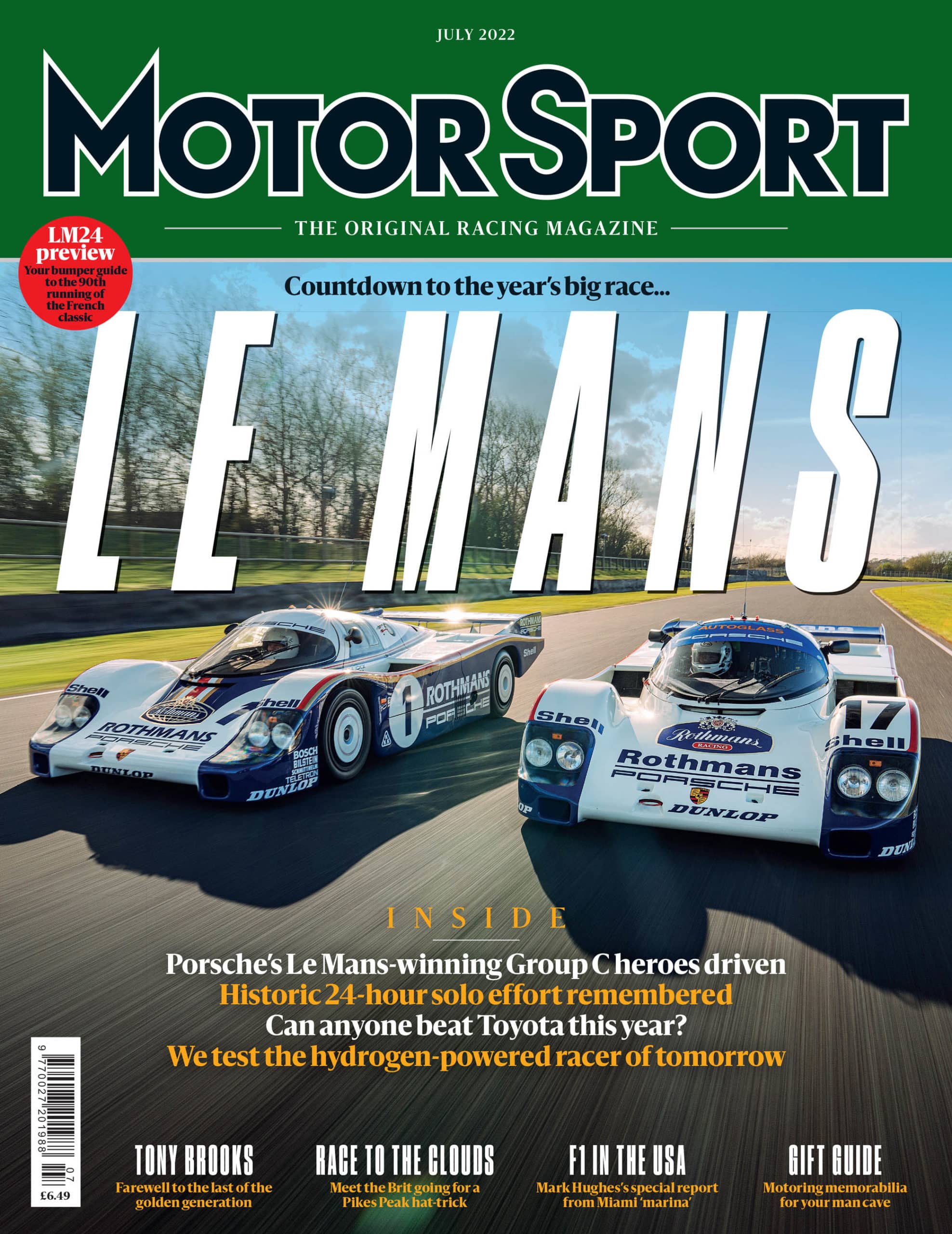
|
Read the full drive in the July issue of Motor Sport |
